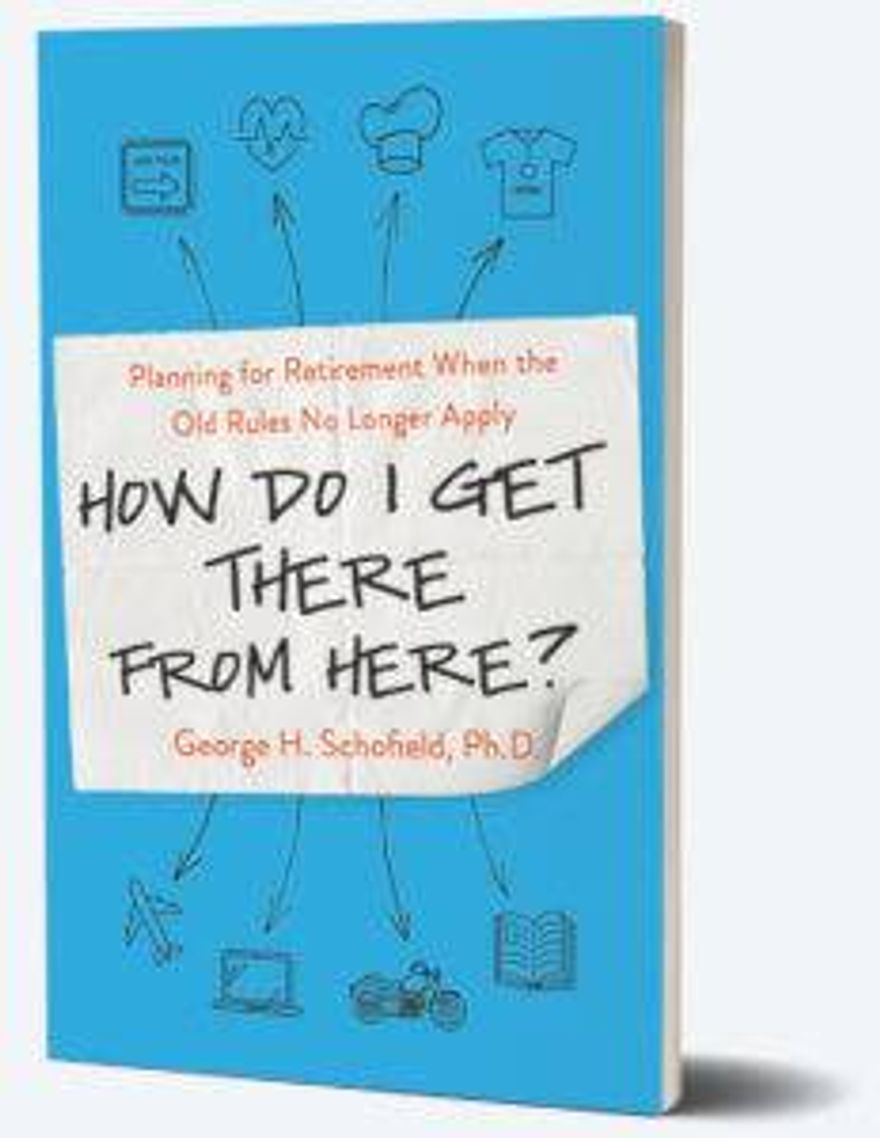The 3 Stages of Life After 50
An excerpt from the new book, 'How Do I Get There From Here?'
(The following is excerpted and adapted from How Do I Get There From Here? Planning for Retirement When the Old Rules No Longer Apply by George H. Schofield, Ph.D.)

It’s an uninformed and inaccurate assumption to think about the period between age 50 and elderly as one single period. It’s as naïve as assuming all boomers are alike, needing and wanting the same things at the same time. It is naïve because it sets us up to be surprised and less adaptable when change —voluntary and involuntary —arrives.
I also think the period between age 50 and elderly is best described as three overlapping periods, not defined by age. They are defined by life situation, and different people arrive at them at different ages and from different circumstances. I’ll explain the three periods and give you examples of people in them.

Period 1: New Freedom
The first of these periods, which I call New Freedom, often begins with becoming empty nesters around age 50, totally unaccustomed to the new discretionary space, income, time and possibilities.
Remember, it’s an individual experience, so age is not an absolute predictor of this period in our lives. It also includes people whose career ambitions are significantly met so that their relationship to work and ambition has been modified. They stop being consumed by their work like a man who looks up and suddenly realizes — to his surprise — that different priorities are emerging.
The reverse is also true. Someone who has stayed at home for decades when suddenly faced with freedom may want to consider exploring options. Discretionary life space is suddenly available. Priorities shift. It can take some getting used to
People in this period often find themselves at least temporarily disoriented by having or taking additional time, space, and planning after years of incessant commotion and action. It is kind of like pushing on a rock for years and it suddenly moves, changing all assumptions.
Sam’s New Freedom Story
Sam went to law school, the first in his family to graduate from college. At age 25, he began to practice law, got married and began to raise a family. On his 33rd birthday, he announced to his wife and children that he would spend 17 more years as a divorce attorney and that on his 50th birthday he would quit and then do something else.
At noon on his 50th birthday he came home, something so unusual that his wife wanted to know what he was doing there.
“I’ve been telling you for years that on my 50th birthday I’d stop practicing law. That’s today. Here I am,” he said.
“But what will you do?” asked his startled wife. “I’m going to be supportive but I don’t want you at home every day getting underfoot and suddenly supervising me.”
“I haven’t had much time to think about it until today,” he replied, “but I think I’ll spend the next six months working with someone who specializes in midlife career change. In fact, I think you should join me because you are about to have an involuntary career change. The kids are going to go away within two years and you will be para-unemployed.”
They sat down at the table in the kitchen with a sandwich and coffee, beginning to work with the fact that they both were happily entering a period of New Freedom but having only a hazy idea of what to do about it.
Period 2: New Horizons
The second of these periods, which I call New Horizons, usually begins after New Freedom has been around for a while and we’re comfortable with having some open, uncommitted life space. New Horizons involves greater focus and clarity about where we want to take the freedom, what we’re curious about, how we want to spend our energy and how we’re going to move into being good at this new phase of life.
Joanna and Dennis Cole's New Horizons Story
Joanna and Dennis Cole, both 59, have been empty nesters for a while. They have enjoyed their New Freedom and took advantage of the time to explore what they want and don’t want in their individual lives and their life together.
Self-employed, to his surprise Dennis wants to retire and is planning to do so in two years. He will sell his dental practice to his younger associate and is negotiating the sale now. He is surprised how much he is looking forward to no longer being responsible for a business yet continuing to work part-time, tapping into his creative side. Always into fine metal work with his hands, Dennis decided he would like to be a jewelry maker and sculptor, traveling to fine craft fairs and making custom pieces for clients. Once that piece of his life was clear to Dennis, he invested in some equipment and materials and began taking fine arts classes. While he doesn’t know what he will do with all of his time, he knows what will make him happy with a significant portion of it. He will figure out the rest as he goes along.
As Joanna began to anticipate the kids leaving, she went back to school to earn a Master’s in engineering. She had worked for an architectural firm as an engineer when she and Dennis started dating, putting her career aside for her family as it grew. The New Freedom period turned out to be essential for her because not only did she earn a new degree, she also grew her professional network in the process.
She has recently started working full-time as an engineer. Her horizons are growing as she hoped they would. She will be on the road part of the time, but she and Dennis don’t see that as a problem since they are both so excited about her professional future.
Period 3: New Simplicity
The third period I call New Simplicity. It’s that period when we decide we don’t want (and maybe cannot handle) so many complicating things in our lives. Large houses and their maintenance; too many relationships that don’t nurture us; excessive volunteer commitments that used to be meaningful but aren’t anymore; physical clutter we’ve held onto for too long and dreams and intentions that no longer hold appeal or punch for us.
Minna Stanley’s New Simplicity Story
Minna and Bob Stanley, ages 72 and 74, had it all planned out. Minna finally retired three years after Bob did. The couple kept their longtime Ohio home and bought a small house in a warm climate on a golf course for their winter retreats.; they would rent it out the rest of the year. Then Minna was diagnosed with terminal cancer.
Almost instantly they both yearned for greater simplicity and less physical baggage as Minna’s illness progressed. By the time Minna was really sick, they had slimmed down everything to a point that Bob could handle it. Minna felt relieved that she had been able to have her hand in the upcoming New Simplicity. They both seemed very peaceful. Bob has promised to live a good and full life. He is assisted in this by the amount of simplicity they created together.
Surprises and Curves Happen
There will always be straightaways and surprise curves on our life’s roadway, sometimes a hairpin turn and sometimes a switchback and sometimes a road so straight and clear that it’s obvious why no speed limit is required. Like it or not, we’re all in a transition. We’re all pioneers.
Imagine you just stepped off a sailing ship onto a beach with a large rock. You don’t know the territory. You don’t know the culture. You don’t know the topography. You don’t know the rules. What you already know and have experienced may or may not be applicable and useful. How do you find out? You pioneer your way through transition after transition. This is increasingly what our world between 50 and elderly will require.
How Do I Get There From Here? Planning for Retirement When the Old Rules No Longer Apply by George H. Schofield, Ph.D. © 2017 George H. Schofield. All rights reserved. Published by AMACOM Books, a division of American Management Association.

